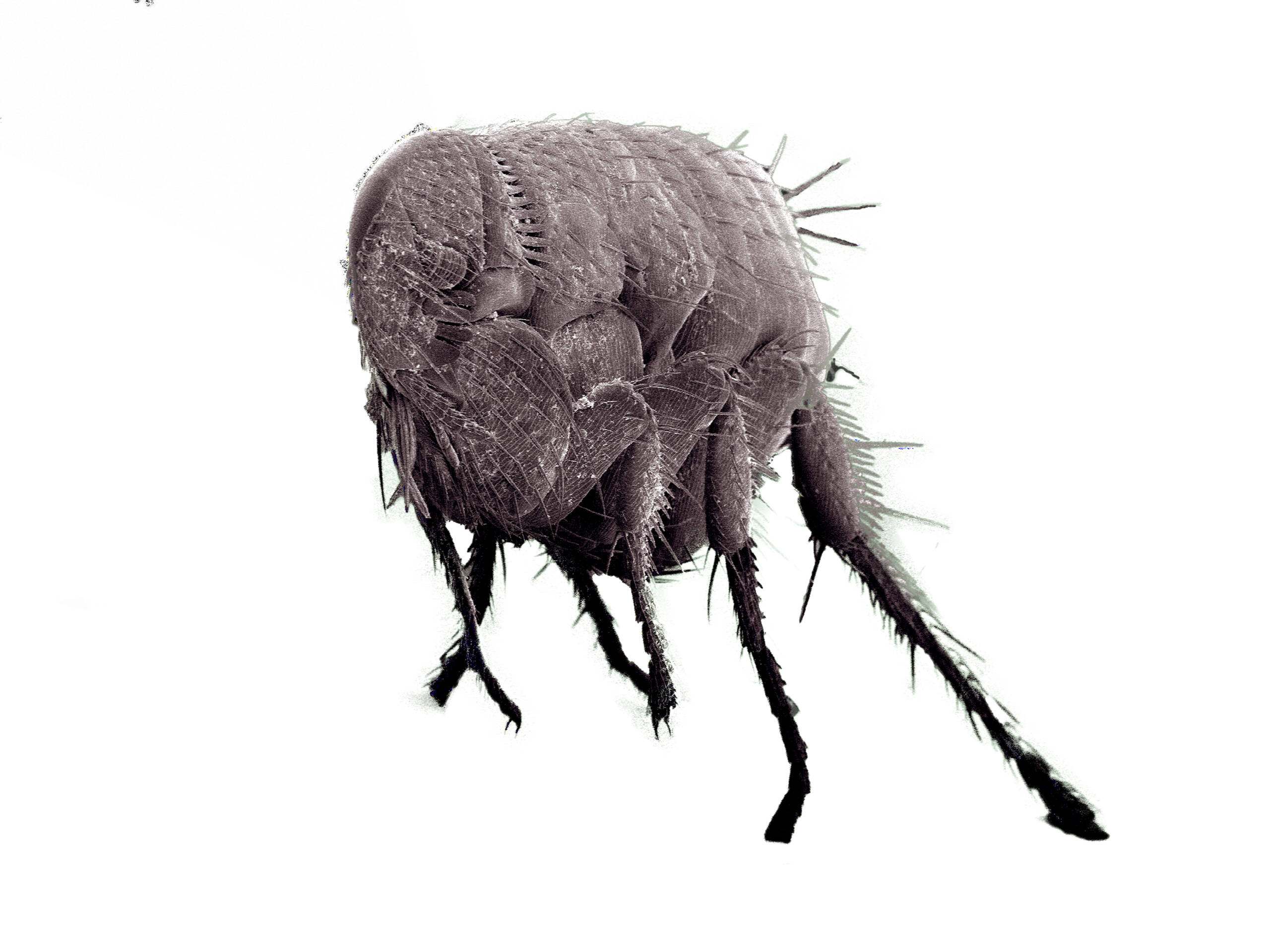1. About Fleas
Fleas are small, wingless, parasitic insects that feed on the blood of mammals and birds. Typically measuring about 1.5 to 3.3 mm, fleas are known for their ability to jump long distances relative to their size. These pests are highly adaptive, living on the host animal and laying eggs that fall off into the environment, leading to widespread infestations. Fleas are commonly found on pets such as cats and dogs, but they can also infest homes and yards, particularly in areas where animals spend a lot of time. While fleas are most commonly associated with pets, they can also bite humans, causing itching and irritation.
2. How to Get Rid of Fleas
The most effective way to get rid of fleas is through a combination of treating your pets, your home, and your yard. Start by using flea treatments on pets, such as flea collars, topical treatments, or oral medications. For your home, wash pet bedding, vacuum floors, and treat carpets and furniture with a flea spray or powder. Flea eggs, larvae, and pupae are tough to eliminate, so thorough cleaning is essential. To treat your yard, remove debris and use insecticides specifically designed for flea control. Regular maintenance and flea treatments will help prevent future infestations.
3. Introduction
Fleas are some of the most common and annoying pests that affect both pets and people. Known for their ability to spread quickly and cause discomfort through their bites, fleas thrive in warm, humid environments. These insects are a nuisance not only because of their bites, which can cause itching and irritation, but also because of their potential to transmit diseases such as the plague. Managing flea infestations requires consistent attention, as they can be hard to eradicate without proper treatment and prevention.
4. Identification of Fleas
Fleas are small, reddish-brown insects that are easily recognized by their flattened bodies, which allow them to move easily through the fur or feathers of their hosts. They have powerful hind legs that enable them to jump great distances, often up to 7 inches vertically. Fleas are about the size of a pinhead, and their bites appear as small red bumps on the skin, which can cause intense itching. To identify fleas, look for signs such as flea dirt (small black specks of feces), which is often found on pets’ fur or in their bedding.
5. Behavior and Habitat
Fleas are parasitic insects that require a host to survive, typically feeding on the blood of animals such as cats, dogs, rabbits, and even humans. Once a flea finds a host, it will live on the host’s skin and fur, feeding and laying eggs. Flea eggs are small and can fall off the host into the surrounding environment, such as bedding, carpets, and furniture. Fleas are most active in warm, humid conditions and can live in a variety of habitats, including homes, yards, and outdoor areas where pets frequent. Their ability to jump long distances allows them to easily move from one host to another.
6. Feeding Habits
Fleas are obligate bloodsuckers, meaning they must feed on blood to survive. They feed by piercing the skin of their host with specialized mouthparts and sucking blood. Fleas feed frequently, and each feeding session lasts a few minutes. After feeding, female fleas will lay eggs, which fall off the host and land in the surrounding environment. Flea larvae feed on organic matter, including the droppings of adult fleas, and pupae eventually develop into adult fleas. This lifecycle makes flea infestations difficult to control, as fleas can exist in multiple stages at once.
7. Prevention and Protection
To prevent fleas, it’s essential to treat your pets with flea prevention products, such as collars, topical treatments, and oral medications. Keeping your home clean by washing pet bedding regularly, vacuuming carpets and upholstery, and treating your home with flea sprays can help prevent flea infestations. For outdoor prevention, keep your yard free of debris and use flea control products on the soil and plants where pets spend time. Regular checks for fleas on pets, particularly after outdoor activities, are crucial in identifying an infestation early.
8. Methods of Control
Flea control involves treating both the pet and the environment. Start by using flea medications and shampoos on your pets, as well as flea collars. Clean your home by washing bedding and vacuuming carpets, upholstery, and floors. Use insecticidal sprays or powders that are safe for pets and humans to treat furniture, carpets, and cracks in the floors. If the infestation is severe, professional pest control services may be necessary to treat your home and yard. Flea bombs or foggers can be used to treat larger areas, but they must be used carefully and according to instructions.
9. Environmental Impact and Ecology
While fleas themselves do not have a significant ecological impact, they can carry diseases such as the plague and typhus, which can affect both animals and humans. Fleas can also serve as a food source for various predators, such as birds and small mammals. In terms of control, insecticides used to treat flea infestations can have environmental consequences, particularly if they contaminate water or affect non-target species. Therefore, it’s important to use flea control products that are safe for the environment and follow guidelines to minimize their ecological impact.
10. Conclusion
Fleas are a common nuisance and can cause a variety of issues for both pets and humans. While not typically dangerous in small quantities, fleas can transmit diseases and cause significant discomfort due to their bites. Effective flea control requires addressing the problem at all stages of the flea lifecycle—treating pets, cleaning the home, and controlling the outdoor environment. With proper prevention and consistent treatment, fleas can be controlled, and the risk of infestation can be minimized. Regular monitoring of pets and their surroundings is key to keeping these pests at bay.


